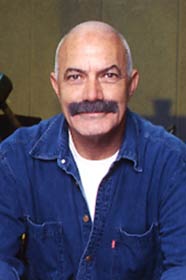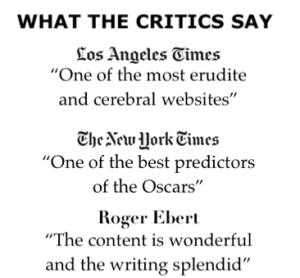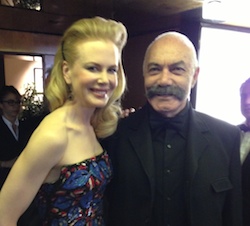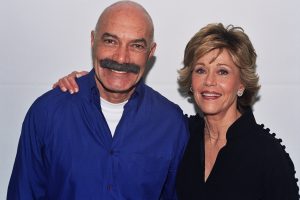No sequence in any musical could rival the ballet on “American in Paris” for its length, delirious structure, flamboyant nature, and combination of colors and sounds. The music and choreography were meant to convey the city’s essence, as perceived by Minnelli. Its conception combined an exuberant American energy with a specifically Gallic flavor, a cross-cultural style that for some was refined, and for others was just Kitsch.
Director Minnelli and star-choreographer Gene Kellys seven-page-continuity called for a glorified production of a ballet that was a mini-musical in its own right. Filming the ballet took longer than the entire schedule for an average MGM production like Minnelli’s own Fathers Little Dividend. Minnelli began shooting the ballet on December 6, and finished on January 8, 1951, with a short break for Christmas.
What made the ballet special was Minnellis visual conception, which keyed each sequence to a different color scheme and architectural style. The segment was actually shot by Kelly, while Minnelli was busy with Fathers Little Dividend. Kelly’s choreography provided the basic movement, but it was Minnelli who turned it into a masterful whirlwind of color and movement, endowing the numbers with propulsive energy.
Irene Sharaff, who had created the costumes for Meet Me in St. Louis and other musicals, was instructed by Minnelli to design about 500 costumes for the ballet. Sharaffs sketches served as blueprints for Ames’ designs. The main challenge faced by the art department was to render the Dufy/Renoir/Utrillo/Rousseau, VanGogh/Toulouse-Lautrec sketches on screen. While sculptor Henry Gretert designed a Place de la Concorde fountain a la Dufy, Minnelli and Alton devised the specific lighting for the sculpture.
In the ballet, Minnelli conjures up the eloquence of silent film, using images for sensuality and emotion. The ballet broke records: For 17 minutes, not a single word was uttered, reflecting Minnellis long-standing belief that words presented unnecessary barriers between the images and the emotions they convey.
After the ballet, the fadeout is brief and anticlimactic. Jerry looks down the street as Lise descends from a taxicab, after bidding adieu to Henri. The lovers race into a stairway of 30 steps to paradise, with Kelly going downward as Caron goes upward. They embrace at mid-landing, before descending quickly together. In a final shot, Minnelli pans upward to a sapphire Paris skyline, as hell also do in a number of his melodramas (Some Came Running).
The film that began as a series of Parisian landmarks (Eiffel Tower, Place de la Concorde) concludes as a film within Impressionist paintings of similar landmarks. The title of Gershwins tone poem is also the title of the movie and its dream ballet. As a composer, Gershwin transcended the boundaries between Europe and America, theater and film, concert Hall and music hall. A hybrid artist, Gershwin served as role model for Minnelli. In the film, Jerry searches furtively for an elusive love, symbolized by an intensely red rose. Like the rose, and like Lise in “Embraceable You,” the beloved is a projection of the dancer’s desire. Only the rose can give color to Jerrys world, only with his beloved can he dance in a world of Impressionist color; without her, his world is black-and-white.
Stylistically, the film’s dissolving spaces mirror the elusiveness of the beloved. Minnelli’s smooth transitions between individual Impressionist settings add the cinema’s unique dimension of time to the painting’s unique dimension of space. Minnellis shifting light, inventive dissolves, twirling mirrors, all create a space that has no existence in the physical world, reflecting the mental world of his imagination.
As Kelly searches for his beloved, he is tempted by lures that parallel temptations in the plot. Milo lures Jerry with her money, a temptation that turns artists into gigolos. A quartet of female Furies (two in red, two in white) lure him from his quest. A parallel quartet of soldiers lures Kelly with the quest for light amusement, but he deserts them when he catches sight of the beloved. At the end of the ballet, Jerry feels that he has lost her forever. He stands alone, holding the symbolic rose of his longing in the black-and-white sketch that began his reverie.
Minnelli and Lerner resolve the film’s narrative before the ballet. It’s remarkable how quickly the film ends after the ballet. The camera follows a trail of cigarette smoke to a smoking face, revealing that Henri has overheard Jerry’s farewell to Lise. The final reunion of Jerry and Lise concludes the film after 17 minutes of pure visual imagery and music. Henri opens a taxi door, permitting Lise’s flight up the steps toward the racing Jerry. The painter finally grasps the rose.
The ballet’s duration of 16 minutes and 37 seconds is the culmination of all the frames, mirrors, and psychological projections that had preceded it. Some believed that the ballet was responsible for winning the Oscar. Moreover, after 1951, the ballet became a standard staple in the genre: No prestigious musical could do without a dance. However, in both concept and audacity, none of the other films ballets equals the dream ballet of American in Paris.
Minnelli not only saw dancing within painting, but dancing through paintings. At times, it feels as if the paintings themselves dance. For Minnelli, the ballet was an American renewal of the spirit that produced Gershwins music in the first place. Gershwin, like a whole generation of American soldiers, went to Paris. The difference between them is that, unlike Gershwin, Jerry decided to stay in Paris to paint.
On another level, the dream ballet celebrates the mythic union of America and Paris, musicals and paintings as art forms. The old France of Henri Borel steps aside so that the American Jerry Mulligan can marry the young France of Lise. In the final credit, the viewers are reminded that the film was “Made entirely in Hollywood, U.S.A.” A postwar covenant of faith, American in Paris is an ambassador that bridged America and Europe, Hollywood and Paris.










